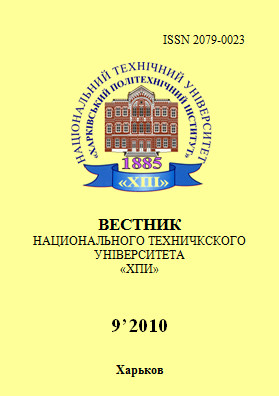Підхід до розробки інформаційного забезпечення для вирішення задачі підбору персоналу в рекрутінгових компаніях
DOI:
https://doi.org/10.20998/%25xAbstract
В статті розглядаються питання автоматизації процесу підбору персоналу в рекрутінгових компаніях, наводиться постановка задачі, розглядається підхід до розробки інформаційного забезпечення з використанням методів багатокритеріальної оптимізації для відбору кандидатів на вакантні посади у різні компанії.References
Грачёв М. В. Суперкадры: Управление персоналом в международной корпорации.– М.: Дело ЛТД, 2006.– 302 с.
Иванова С. В. Искусство подбора персонала: Как оценить человека за час.– М.: Альпина Бизнес Букс, 2004.– 160 с.
Спивак В. А. Организационное поведение и управление персоналом.– СПб: Питер, 2000.– 416 с.
Downloads
Published
2009-12-25
How to Cite
Стратієнко, Н. К., & Сумцова, К. С. (2009). Підхід до розробки інформаційного забезпечення для вирішення задачі підбору персоналу в рекрутінгових компаніях. Bulletin of National Technical University "KhPI". Series: System Analysis, Control and Information Technologies, (9), 144–148. https://doi.org/10.20998/%x
Issue
Section
SYSTEM ANALYSIS AND DECISION-MAKING THEORY
License
Copyright (c) 2015 Вісник Національного технічного університету «ХПІ». Серія: Системний аналiз, управління та iнформацiйнi технологiїAuthors who publish with this journal agree to the following terms:
- Authors retain copyright and grant the journal right of first publication with the work simultaneously licensed under a Creative Commons Attribution License that allows others to share the work with an acknowledgement of the work's authorship and initial publication in this journal.
- Authors are able to enter into separate, additional contractual arrangements for the non-exclusive distribution of the journal's published version of the work (e.g., post it to an institutional repository or publish it in a book), with an acknowledgement of its initial publication in this journal.
- Authors are permitted and encouraged to post their work online (e.g., in institutional repositories or on their website) prior to and during the submission process, as it can lead to productive exchanges, as well as earlier and greater citation of published work (See The Effect of Open Access).


